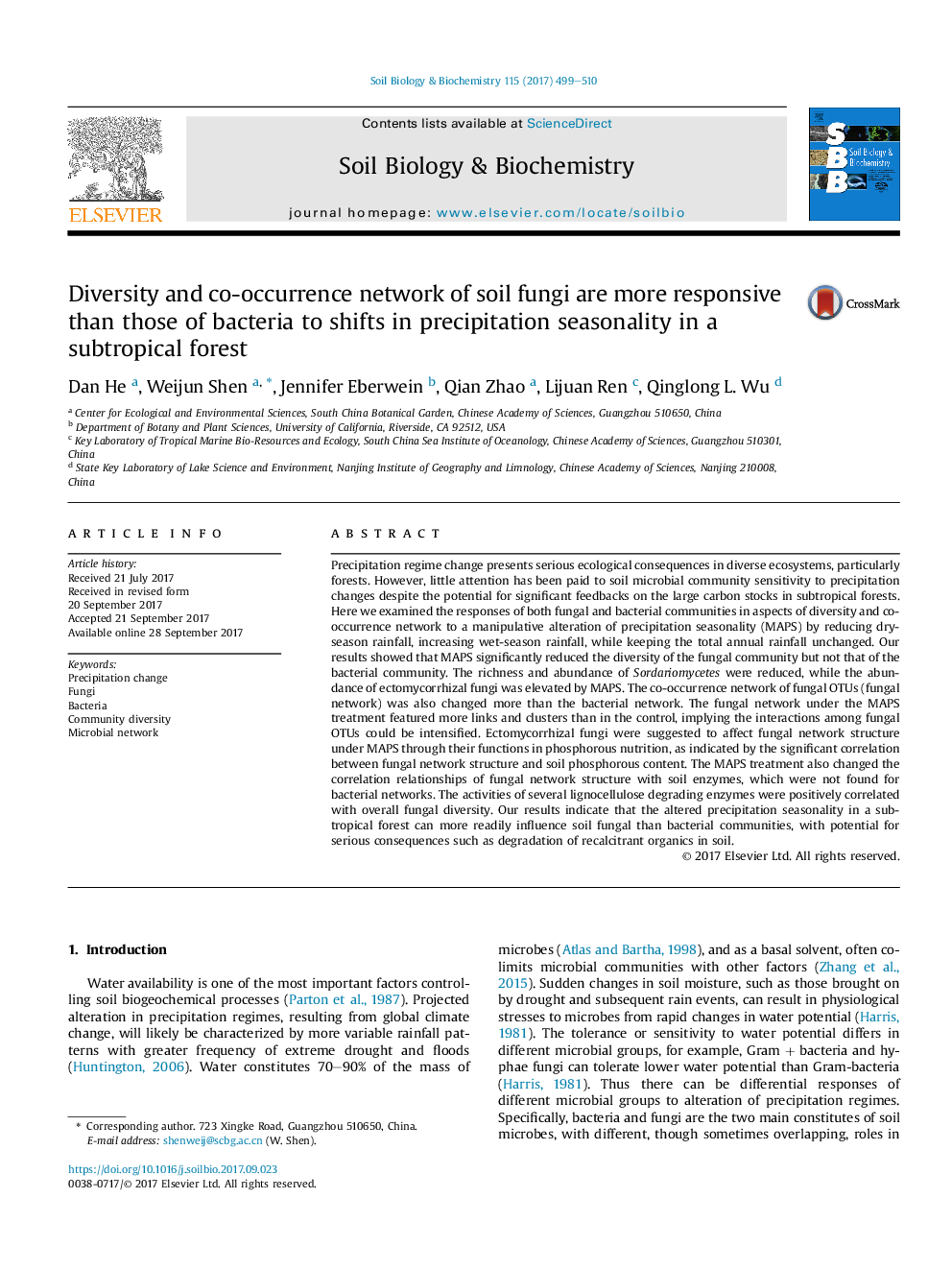| Article ID | Journal | Published Year | Pages | File Type |
|---|---|---|---|---|
| 5516271 | Soil Biology and Biochemistry | 2017 | 12 Pages |
â¢Precipitation change reduced fungal but not bacterial community diversity.â¢The fungal network was more responsive to precipitation change.â¢Fungal diversity was positively correlated with lignocellulose degrading enzymes.
Precipitation regime change presents serious ecological consequences in diverse ecosystems, particularly forests. However, little attention has been paid to soil microbial community sensitivity to precipitation changes despite the potential for significant feedbacks on the large carbon stocks in subtropical forests. Here we examined the responses of both fungal and bacterial communities in aspects of diversity and co-occurrence network to a manipulative alteration of precipitation seasonality (MAPS) by reducing dry-season rainfall, increasing wet-season rainfall, while keeping the total annual rainfall unchanged. Our results showed that MAPS significantly reduced the diversity of the fungal community but not that of the bacterial community. The richness and abundance of Sordariomycetes were reduced, while the abundance of ectomycorrhizal fungi was elevated by MAPS. The co-occurrence network of fungal OTUs (fungal network) was also changed more than the bacterial network. The fungal network under the MAPS treatment featured more links and clusters than in the control, implying the interactions among fungal OTUs could be intensified. Ectomycorrhizal fungi were suggested to affect fungal network structure under MAPS through their functions in phosphorous nutrition, as indicated by the significant correlation between fungal network structure and soil phosphorous content. The MAPS treatment also changed the correlation relationships of fungal network structure with soil enzymes, which were not found for bacterial networks. The activities of several lignocellulose degrading enzymes were positively correlated with overall fungal diversity. Our results indicate that the altered precipitation seasonality in a subtropical forest can more readily influence soil fungal than bacterial communities, with potential for serious consequences such as degradation of recalcitrant organics in soil.
